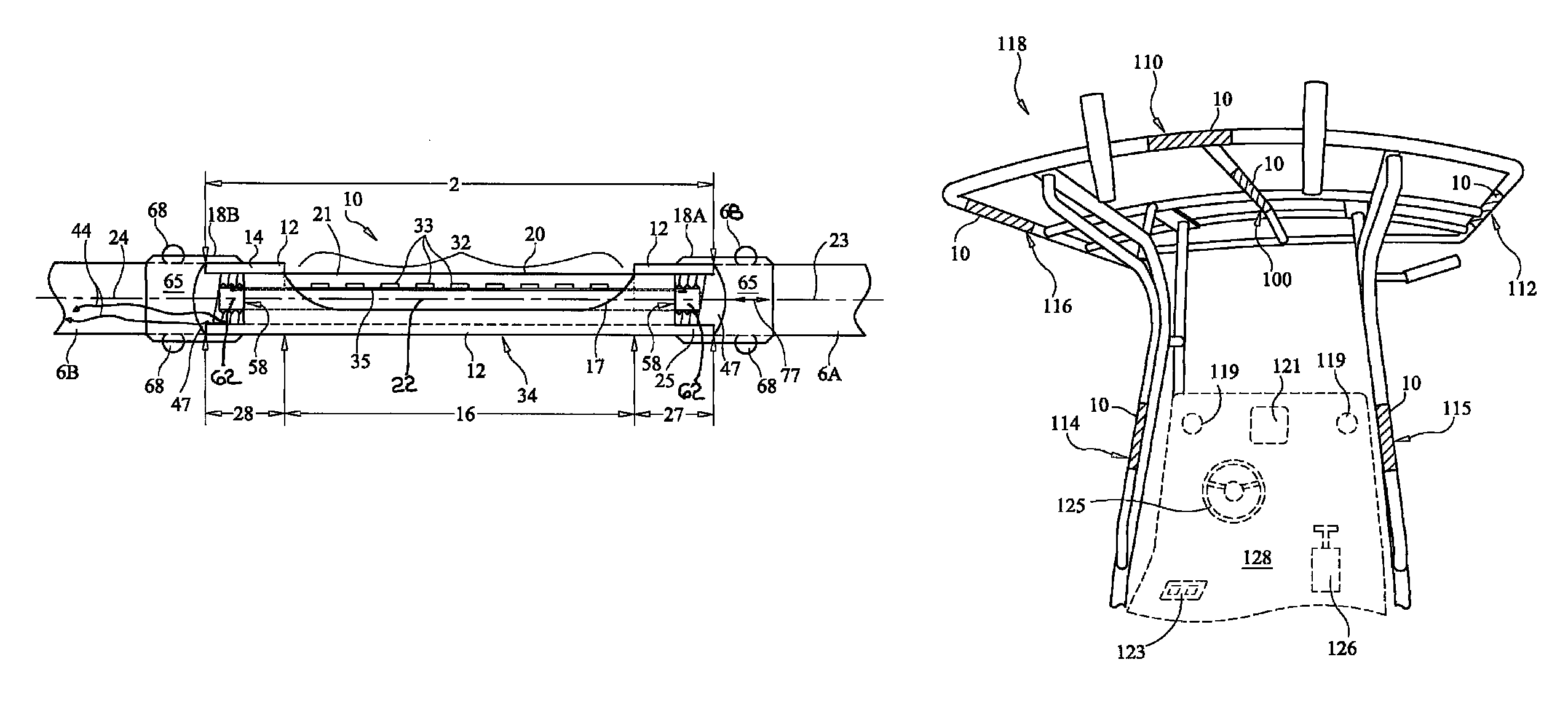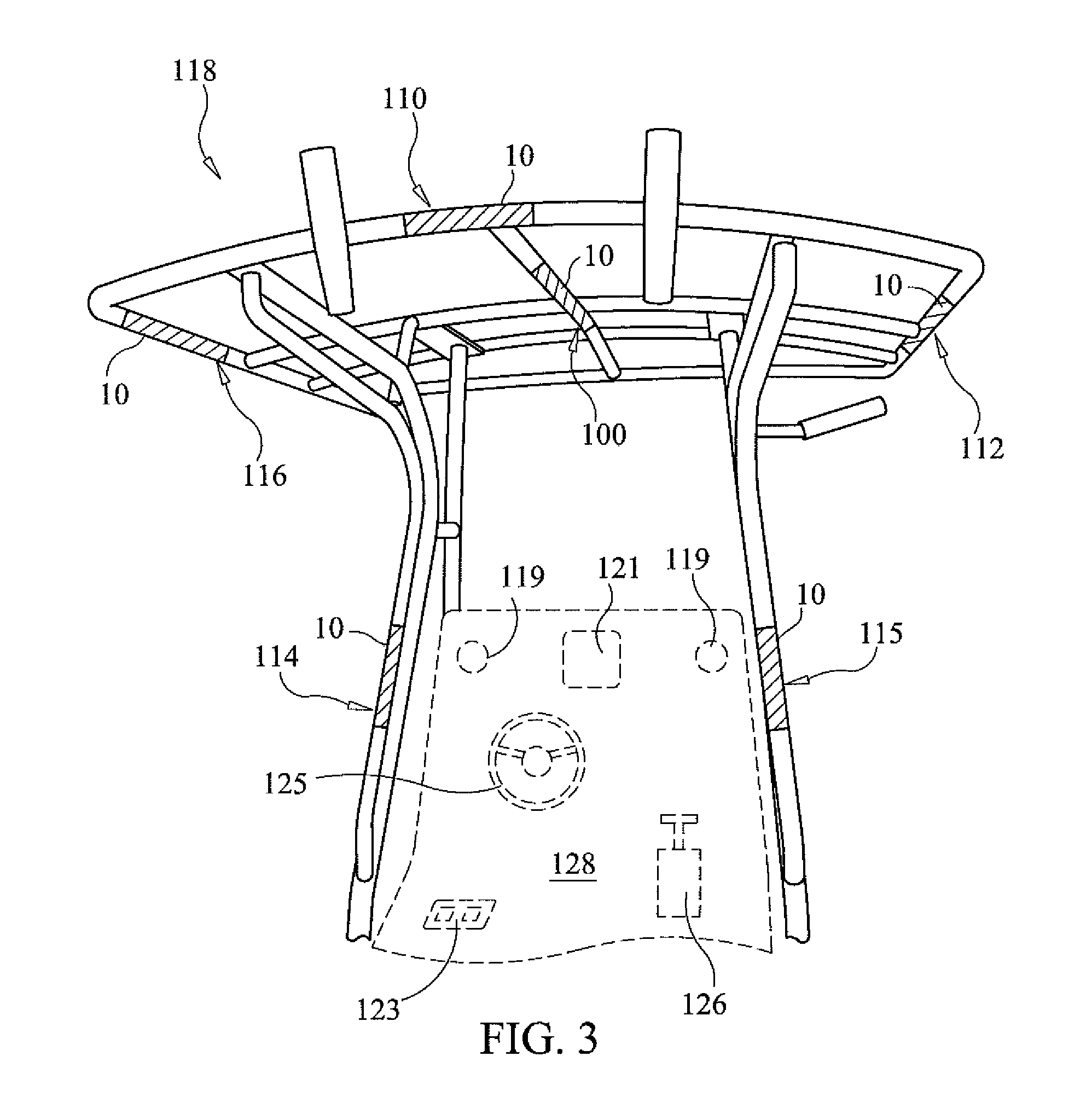Marine lighting apparatus and method
a technology for marine vessels and lighting devices, applied in lighting and heating devices, semiconductor devices for light sources, instruments, etc., can solve the problems of heavy drain, inconvenient maintenance, and inability to meet the needs of marine vessels, so as to improve reliability, enhance operating life, and improve energy efficiency
- Summary
- Abstract
- Description
- Claims
- Application Information
AI Technical Summary
Benefits of technology
Problems solved by technology
Method used
Image
Examples
Embodiment Construction
[0021]A first preferred embodiment of a marine lighting device 10 according to the invention is suitable for mounting longitudinally in-line with a tubular member of a marine vessel structure and will now be described with reference to FIG. 1. Device 10 is mountable in a gap 2, present between opposed free ends 3, 4 of tubular member(s) 6A, 6B of a marine vessel structure. Device 10 has a tubular housing 12 whose outer wall 14 includes a partially open, or partially cutaway, central portion 16 which includes an edge 17 which defines the periphery of an opening 19 through which illumination may be emitted. Housing 12 has opposed ends 25, 26 and is preferably of a material such as brass, stainless steel or anodized aluminum having a wall thickness sufficient to provide sufficient mechanical strength for the application at hand. Housing 12 may be for example of polished anodized aluminum. Preferably, the strength of housing 12 is at least comparable to, and most preferably is greater t...
PUM
 Login to View More
Login to View More Abstract
Description
Claims
Application Information
 Login to View More
Login to View More - R&D
- Intellectual Property
- Life Sciences
- Materials
- Tech Scout
- Unparalleled Data Quality
- Higher Quality Content
- 60% Fewer Hallucinations
Browse by: Latest US Patents, China's latest patents, Technical Efficacy Thesaurus, Application Domain, Technology Topic, Popular Technical Reports.
© 2025 PatSnap. All rights reserved.Legal|Privacy policy|Modern Slavery Act Transparency Statement|Sitemap|About US| Contact US: help@patsnap.com



